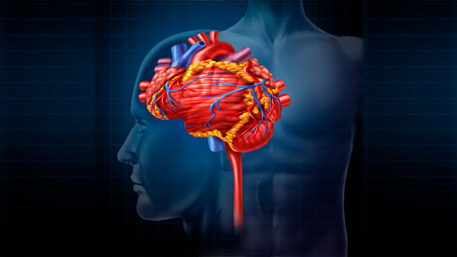 Spotlight
Spotlight
Clinical signatures of genetic epilepsies precede diagnosis in electronic medical records of 32,000 individuals
(Posted Jul 15, 2024 9AM)
Implications of Provider Specialty, Test Type, and Demographic Factors on Genetic Testing Outcomes for Patients with Autism Spectrum Disorder
(Posted Jun 18, 2024 4PM)
APOE4 homozygozity represents a distinct genetic form of Alzheimer’s disease
(Posted May 07, 2024 10AM)
The FDA and Gene Therapy for Duchenne Muscular Dystrophy
(Posted May 01, 2024 5PM)
 Latest News and Publications
Latest News and Publications
Raman R, et al. The journal of prevention of Alzheimer's disease 2024 0 0. (4) 874-880
Long-term risk of autoimmune diseases after mRNA-based SARS-CoV2 vaccination in a Korean, nationwide, population-based cohort study.
Jung Seung-Won, et al. Nature communications 2024 0 0. (1) 6181
Pulmonary hypertension exacerbated by hereditary hemorrhagic telangiectasia combined with pulmonary arteriovenous fistula and pregnancy status: A case report.
Chen Wanjiao, et al. International journal of cardiology. Cardiovascular risk and prevention 2024 0 0. 200300
Morbidity and Mortality Associated with COVID-19 and Acute Chest Syndrome in Sickle Cell Disease Patients.
Keita Mohamed, et al. Hemoglobin 2024 0 0. 1-7
Patients with Gaucher disease display systemic elevation of ACE2, which is impacted by therapy status and genotype.
Fokra Ahmad, et al. Molecular genetics and metabolism 2024 0 0. (1-2) 108534
Differentiating idiopathic inflammatory myopathies by automated morphometric analysis of MHC-1, MHC-2 and ICAM-1 in muscle tissue.
Nishimura Anna, et al. Neuropathology and applied neurobiology 2024 0 0. (4) e12998
COVID-19 and Parkinson's disease: a single-center study and Mendelian randomization study.
Yin Jianhong, et al. Scientific reports 2024 0 0. (1) 16517
Potential value and research frontiers of virus in neuroinflammation: a bibliometric and visualized analysis.
Li Danyang, et al. Frontiers in immunology 2024 0 0. 1390149
SARS-CoV-2 brainstem encephalitis in human inherited DBR1 deficiency.
Chan Yi-Hao, et al. The Journal of experimental medicine 2024 0 0. (9)
At-admission prediction of mortality and pulmonary embolism in an international cohort of hospitalised patients with COVID-19 using statistical and machine learning methods.
Mesinovic Munib, et al. Scientific reports 2024 0 0. (1) 16387
Identification of risk factors of Long COVID and predictive modeling in the RECOVER EHR cohorts.
Zang Chengxi, et al. Communications medicine 2024 0 0. (1) 130
Machine learning algorithms for predicting COVID-19 mortality in Ethiopia.
Alie Melsew Setegn, et al. BMC public health 2024 0 0. (1) 1728
Comparative policy analysis of national rare disease funding policies in Australia, Singapore, South Korea, the United Kingdom and the United States: a scoping review.
Qin Xiang Ng et al. Health Econ Rev 2024 14(1) 42
A more objective PD diagnostic model: integrating texture feature markers of cerebellar gray matter and white matter through machine learning.
Yini Chen et al. Front Aging Neurosci 2024 161393841
An improved method for diagnosis of Parkinson's disease using deep learning models enhanced with metaheuristic algorithm.
Babita Majhi et al. BMC Med Imaging 2024 24(1) 156
Evaluation of machine learning-based classification of clinical impairment and prediction of clinical worsening in multiple sclerosis.
Samantha Noteboom et al. J Neurol 2024
OSApredictor: A tool for prediction of moderate to severe obstructive sleep apnea-hypopnea using readily available patient characteristics.
Amlan Talukder et al. Comput Biol Med 2024 178108777
Using machine learning algorithms to detect fear of falling in people with multiple sclerosis in standardized gait analysis.
Paula Schumann et al. Mult Scler Relat Disord 2024 88105721
Association of Occupational Dysfunction and Hospital Admissions With Different Polygenic Profiles in Bipolar Disorder.
Lina Jonsson et al. Am J Psychiatry 2024 appiajp20230073
CYP2C19 Genotype Is Associated With Adverse Cardiovascular Outcomes in Black Patients Treated With Clopidogrel Undergoing Percutaneous Coronary Intervention.
Kayla R Tunehag et al. J Am Heart Assoc 2024 e033791
More
About ND PHGKB
Neurological Disorders (ND) PHGKB is an online, continuously updated, searchable database of published scientific literature, CDC and NIH resources, and other information that address the public health impact and translation of genomic and other precision health discoveries into improved health outcomes related to neurological disorders....more
Content Summary
Common ND Related Topics
Disclaimer: Articles listed in the Public Health Knowledge Base are selected by the CDC Office of Public Health Genomics to provide current awareness of the literature and news. Inclusion in the update does not necessarily represent the views of the Centers for Disease Control and Prevention nor does it imply endorsement of the article's methods or findings. CDC and DHHS assume no responsibility for the factual accuracy of the items presented. The selection, omission, or content of items does not imply any endorsement or other position taken by CDC or DHHS. Opinion, findings and conclusions expressed by the original authors of items included in the update, or persons quoted therein, are strictly their own and are in no way meant to represent the opinion or views of CDC or DHHS. References to publications, news sources, and non-CDC Websites are provided solely for informational purposes and do not imply endorsement by CDC or DHHS.
- Page last reviewed:Feb 1, 2024
- Content source:


